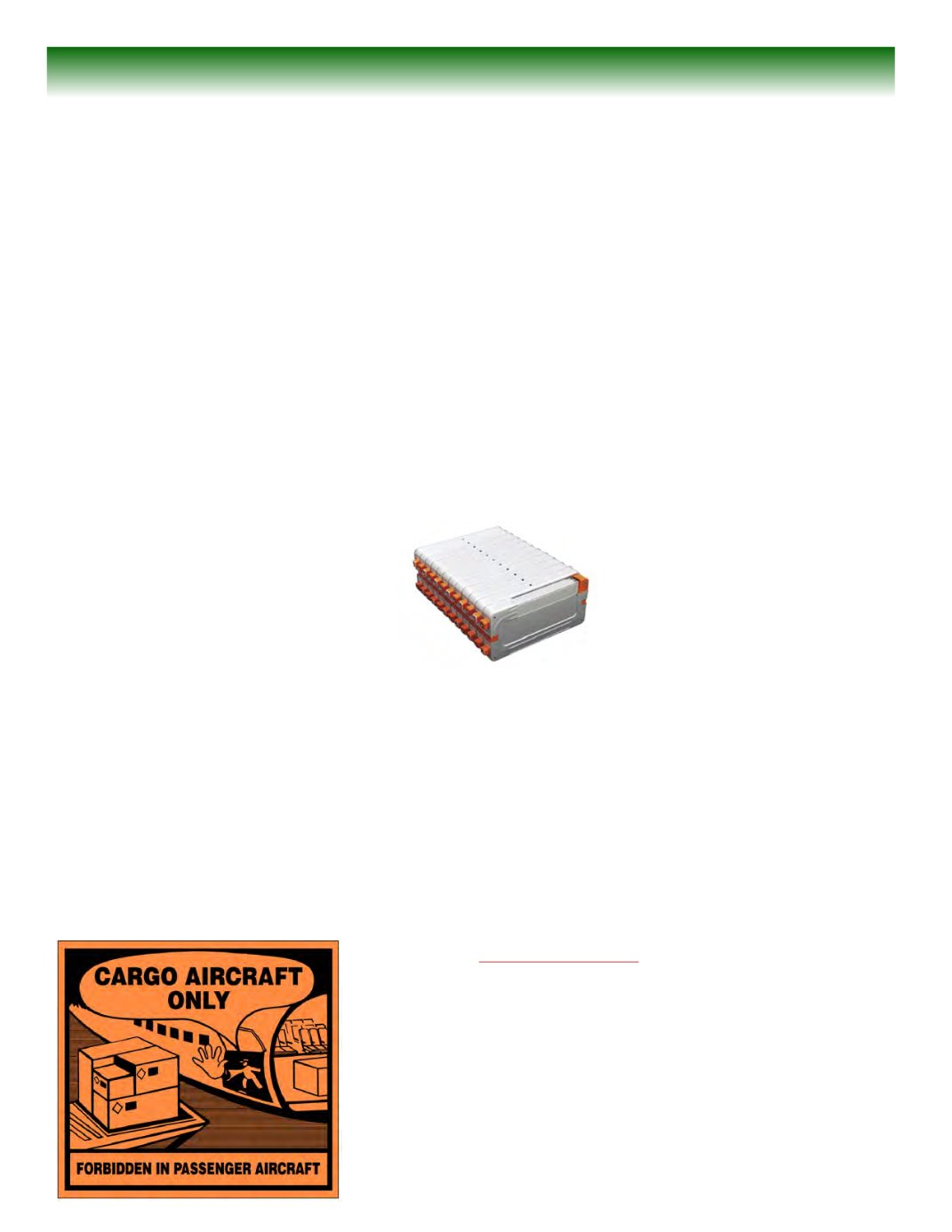

Page 12
Recyclers News Press
Battery “Dangerous Goods” Regulation
Update HazMat Training to Ship Li Ion Hybrid Batteries
A Hazardous Material (HazMat) means a material,
determined by the Department of Transportation,
capable of posing a risk to health, safety and prop-
erty when transported. HazMat includes hazardous
substances, dangerous goods, hazardous waste,
and elevated temperature materials.
Of all the shippers' responsibilities, the requirement
to properly classify a hazardous material is very
important. It is from the proper identification of the
hazardous materials that the other requirements are
based. For automotive recyclers training and certifi-
cation, the hazardous materials are:
Airbag Inflators:
Consisting of a cast-
ing containing an igniter, a booster materi-
al and a gas generate.
Airbag Module:
Consisting of the airbag inflator plus air-
bag assembly.
Seat belt pre-tensioner:
Contains similar hazardous materials and
is used in the operation of a seat belt re-
straining system in a motor vehicle.
Lithium-ion Batteries:
All types of lithi-
um batteries were recently designated as
“Dangerous Goods” with shipping restrictions.
Automotive large format batteries for electric and
hybrid vehicles will be either Nickel Metal Hydride
or Lithium-ion batteries.
Lithium-ion batteries have higher energy densities
than lead-acid batteries or nickel-metal hydride bat-
teries. Having a high energy density means that the
battery can store more electricity in the same size
cell. It follows, then, that with the same amount of
electricity it is possible to make the battery smaller.
This is why the lithium-ion battery is ideal for being a
battery on an
electric vehicle,
since it is com-
pact and light-
weight. A bat-
tery with high
capacity is in-
dispensable for
improving ac-
celeration and
fuel efficiency
for hybrid vehi-
cles.
The hybrid Li-ion battery delivers twice the power
compared to similarly sized conventional cells. As
the output of the battery increases, so too does the
acceleration. It also more efficiently stores energy
during deceleration, further improving fuel efficiency.
Most Lithium batteries are considered hazardous
materials (also called dangerous goods,) and are
subject to regulations issued by the DOT and Inter-
national Civil Aviation Organization (ICAO). The
DOT’s Pipeline and Hazardous Materials Safety Ad-
ministration (PHMSA) works to ensure the safe
transportation of hazardous materials – including
batteries – shipped by highway, rail, water, or air.
The regulations pertaining to the
transportation of lithium batteries
have changed recently. The new
regulations also apply to cells and
batteries that are packed with or
contained in equipment.
Shippers of larger cells and batter-
ies must comply with specific labeling, marking,
packaging, shipping paper, and employee training
requirements as is the case in HazMat shipping of
airbag for recyclers.
The DOT HazMat regulations prohibit the transport
of lithium metal batteries on passenger-carrying air-
craft and requires specific markings on packaging
that contain small, consumer-type lithium metal bat-
teries thus the reason why you cannot put lithium
batteries in checked luggage. A “cargo aircraft only”
label must be placed on packaging containing larger
cells and batteries that are shipped as hazardous
materials. For more information visit the web site at
http://hazmat.dot.gov .HazMat must be prepared for shipment in a very
specific manner. HazMat shipping papers provide
information on shipper/receiver name and address,
HazMat description, DOT proper shipping name,
quantity, emergency response information and certi-
fication and signature. If you ship or deliver HazMat
in your own vehicle, such your own pick-up truck or
delivery van, then you must comply 100% with
these regulations. Under this scenario no placards
are required on the vehicle.
Continued on page 15...


















